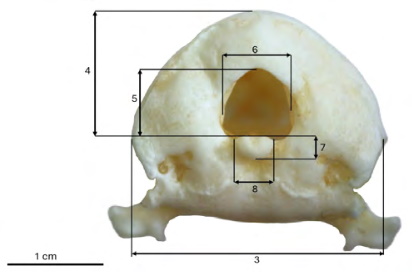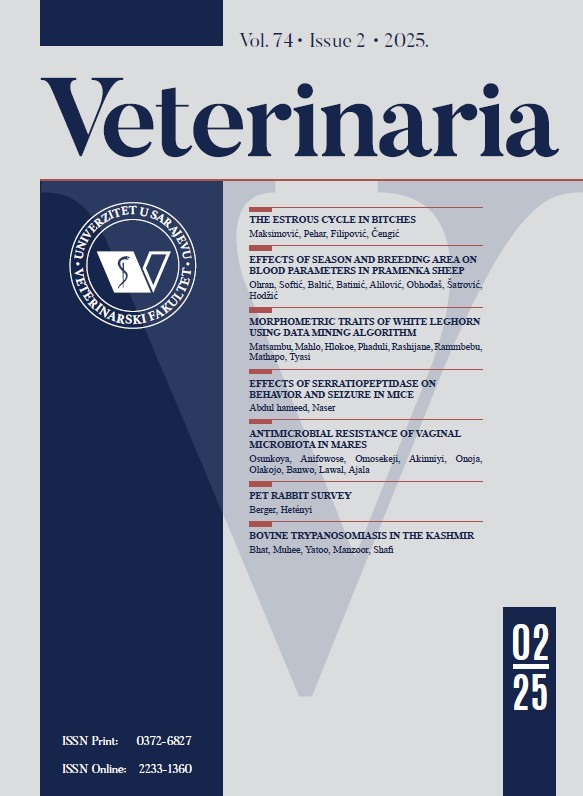Morphometric study of neurocranium in different male chicken breeds raised in Turkey
DOI:
https://doi.org/10.51607/22331360.2024.73.1.44Keywords:
cranium, chicken breed, linear parameters, male chickenAbstract
In the poultry industry, male chicks, serve various purposes depending on the specific production system and market demands, mostly for meat production. In the systems where male chicks are raised for meat production, they may be slaughtered at around six to nine weeks old. The aim of this study was to assess the male neurocranium of different chicken breeds through linear morphometric parameters. The morphometrical study were undertaken in 70 skulls of chicken breeds: 12 Ataks (AT), 12 Sasso (SS), 12 Lohmann Brown (LB), 12 Broiler (BR) and 10 Leghorn (LG), raised in Turkey. In total eight linear measurement were determined in accordance with the anatomical structure of chicken skulls and two skull indices were calculated. The data are shown that the length and width of the neurocranium of the fifth laying hens breeds are quite near each others and biger than the broiler breed (BR). The longest and widest skull belong to the (SS) breed with 43.01±4.05mm and 29.12±2.61mm, respectively. The smallest skull belong to (BR) breed length and width 32.07±3.38mm and 22.44±2.44mm, respectively. The cranial length (Cl) in the (AT) breed is statistically different with (BR) breed p<0.001 and (LG) breed p<0.05. The maximum width of the cranium of all breeds is statistically different p<0.001 with (BR) breed and, in (SS) is statistically different with (BR) 0.001 and (LG) breed p<0.01. As a conclusion, the data of this study can serve for further research in the similar fields and to use it in comparative studies in galliformes species.

Downloads
Published
How to Cite
Issue
Section
License
Copyright (c) 2024 Sokol Duro, Burak Ünal, Nicoleta Manuta, Buket Çakar, Barış Can Güzel, Aycan Korkmazcan

This work is licensed under a Creative Commons Attribution 4.0 International License.







